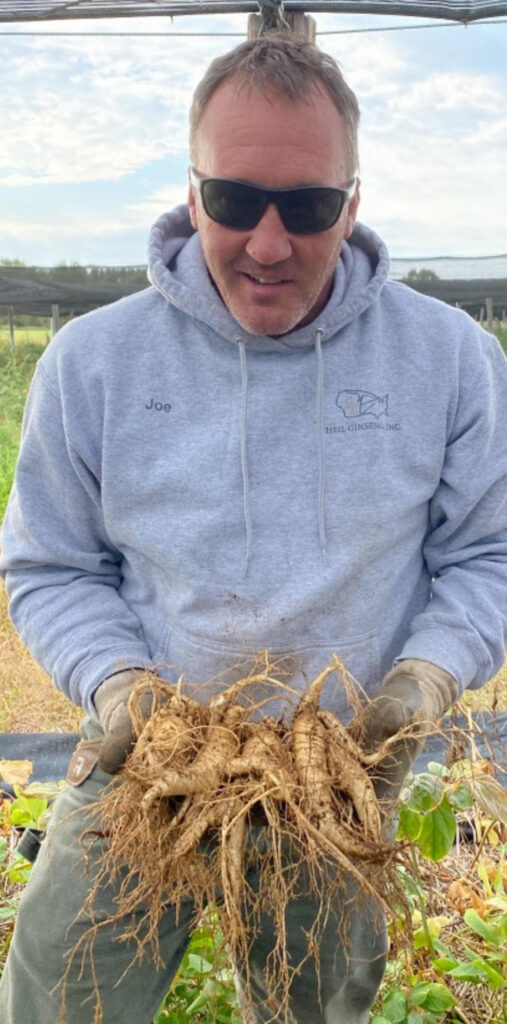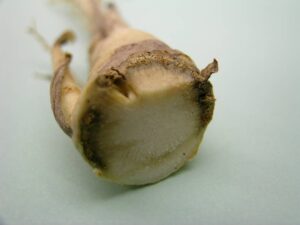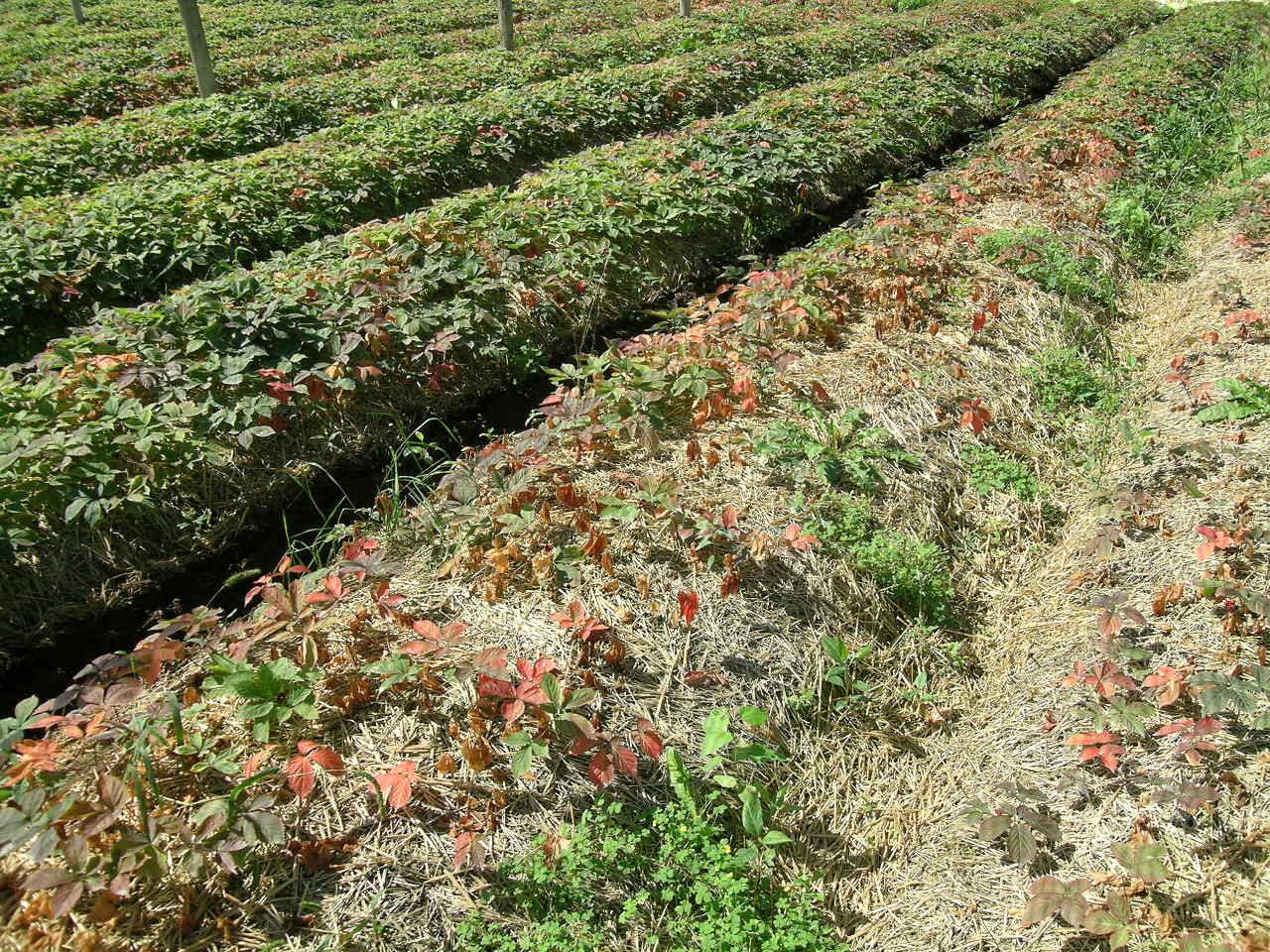Isofetamid now an option for rusty root disease management
By David Kuack

To say that ginseng is an important specialty crop in Wisconsin would be an understatement. Wisconsin growers account for 90 percent of the ginseng produced in the United States. Within the state, growers in Marathon County produce about 95 percent of the annual crop, as this area’s climate and soil type are ideal for ginseng production.
Joe Heil, founder and president of Heil Ginseng, Inc., is a prime example of Marathon County ginseng success. Heil has been producing ginseng in Edgar, WI, for over 30 years, with 270 acres currently in production. Of the ginseng Heil produces, 10 percent is sold retail, while the bulk of the crop is exported directly to China.
Market changes spur heightened focus on pest management
Heil, a member of the Ginseng Board of Wisconsin, highlighted recent changes in the market, which require new methods of production and processing. These changes, in turn, have elevated the importance of pest management.
“In the past, the majority of the ginseng was harvested as three-year-old plants. Now, the market is calling for a bigger root because it is being processed differently,” explained Heil. “More of the ginseng is being sliced, so that calls for larger roots and a longer crop time. Because plants are being left in the ground an additional year, this increases the risk of disease pressure and infestation. This is where the management of resistance and having the tools for disease control become even more important.”
Rusty root a pressing fungal problem in ginseng

Cylindrocarpon destructans, commonly called rusty root, is a persistent disease wherever ginseng is grown. Infection starts as small, yellowish-brown spots on the root surface that enlarge rapidly, changing to a reddish-brown, spongy rot. The root exterior turns dark brown at infection sites. As the disease progresses through the roots, only fragments remain. It can also progress into the plant crown and stems.
Dr. Mary Hausbeck, Michigan State University Plant Pathologist and Extension Specialist, conducts extensive ginseng research for IR-4. Hausbeck noted that the disease may be introduced to ginseng from pine woodlots that have been cleared for ginseng production.
“Since the fungus is soil-borne, it is much more difficult to control because the fungicides labeled for use have to be delivered to the root system,” explained Hausbeck. “This is made more difficult by the layer of mulch growers place around the base of the plants to retain soil moisture. The disease impacts all underground plant parts.”
C. destructans infection is not visible until the crop is harvested, which presents another management challenge. Heil reported that as much as 25 percent of a crop may be infected, which results in a total loss.
“Cylindrocarpon seems to be becoming a bigger issue,” Heil said. “The increased pressure growers are receiving to deliver a clean harvested product means having to grow cleaner crops.”
Hausbeck reported that C. destructans is a phytosanitary issue for export of ginseng because the pathogen mars the roots. Officials in other countries are concerned about spread of the pathogen via imported roots, so growing unblemished ginseng is essential for export growers.
Although other fungicides currently registered to control C. destructans on ginseng have been effective, Heil emphasizes that more tools are needed to ensure the disease is kept in check, and to mitigate the risk of the pathogen developing resistance to existing fungicides.
Finding an answer in Isofetamid
Hausbeck has been conducting efficacy and residue trials with the fungicide Isofetamid to control C. destructans on ginseng. The fungicide was discovered by ISK Biosciences Corporation in 2005, and received its first label registration for use in 2014.
“Our trials have shown this fungicide is very effective,” Hausbeck said. “Ginseng has to be protected over a very long production period. Adding another active ingredient that is more effective than what is currently labeled, and extends protection over a longer season, is critical to growers.”
Hausbeck and her research team worked with growers to conduct efficacy and residue trials with Isofetamid both in greenhouses and in the field. Efficacy trials examine “how well the fungicide works or how to maximize the product,” Hausbeck explained. In residue trials, “we make the fungicide applications according to what a label will eventually be. The growers then allow us to dig up the ginseng roots for residue testing that is required by IR-4 and the Environmental Protection Agency (EPA).”
IR-4’s research generated the data needed to submit a petition to EPA requesting a new tolerance to support this expanded use of Isofetamid on ginseng. Ginseng was added to ISK Biosciences Corp.’s master label, Isofetamid 400SC Fungicide, after it was approved by EPA in September, 2022*.
Grateful for IR-4
Heil called The IR-4 Project “a lifeline” for the ginseng industry. Compared to large acreage commodity crops like corn and soybeans (and even other specialty crops), the amount of acreage in ginseng production is quite small.
“IR-4 is doing for the ginseng industry exactly what it was set up to do,” commended Heil. “The ginseng industry is small and doesn’t have the dollars to do in-house research. We also don’t have the dollars to lobby the chemical companies to expand labels to add ginseng. As an industry, we certainly recognize the value of IR-4. We participate in IR-4 meetings. We make our Congressional representatives aware of what IR-4 does for this industry, and how it is important for the state of Wisconsin for sustaining jobs and generating revenue dollars. IR-4 is crucial to the ginseng industry. I don’t know what we would do without IR-4.”

Notes
*Ginseng was added to ISK Biosciences Corp.’s master label, Isofetamid 400SC Fungicide (EPA Reg. No. 71512-22) when it was approved by EPA in September, 2022. The commercial product is sold by ISK distributor for Isofetamid, Summit Agro, as Kenja 400SC Fungicide (EPA Reg. No. 71512-22-88783). A supplemental label for ginseng was approved at the time EPA approved the Section 3 label.
Read More
Heil Ginseng Inc.
Hausbeck Lab at MSU
Managing Cylindrocarpon on Ginseng (Hausbeck, M. & Harlan, B.)
David Kuack is a freelance technical writer in Fort Worth, Texas; dkuack@gmail.com.
About The IR-4 Project
The mission of the IR-4 Project is to facilitate regulatory approval of sustainable pest management technologies for specialty crops and specialty uses to promote public well-being. By working directly with local crop growers across the country, IR-4 conducts research and develops data necessary for the registration of pest management tools, ensuring that they are safe for use. To learn more, visit our website.
